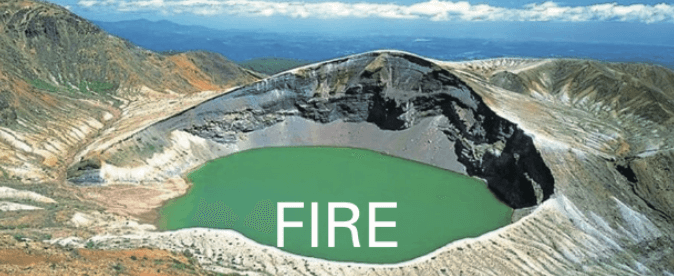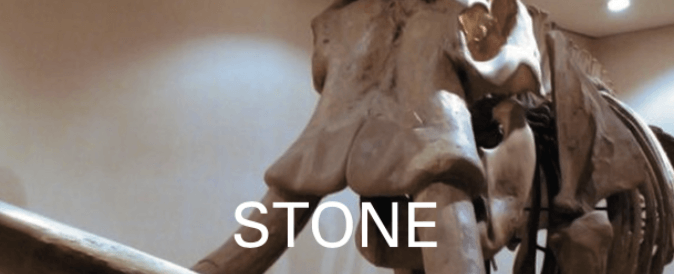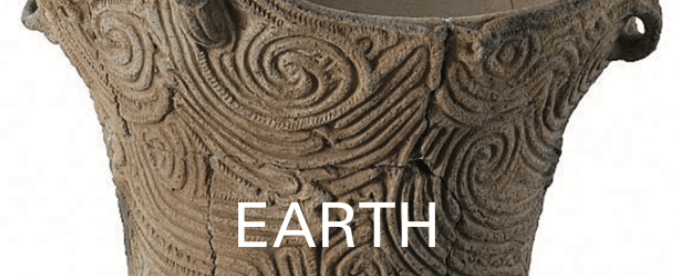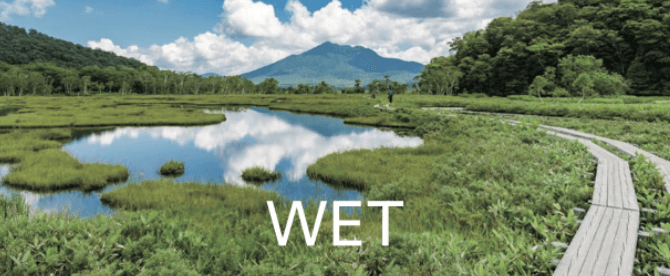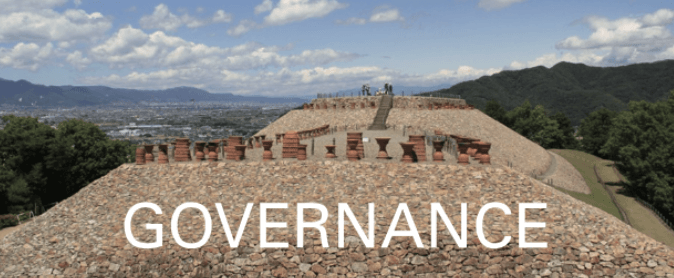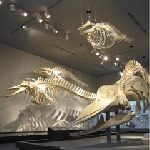
This is a general museum with the theme of ” Chiba’s natural and human history”. This museum introduces earth science, living organisms, oceans and history of Chiba prefecture, using a huge skeletal specimen including Naumannou, video image, reproductions of Buddha statues, and others.
In the adjacent “ecological garden”, you can observe animals and plants in the wild bird observatory. And in the classified exhibition room, you must see the skeleton specimen of the huge sperm whale, the “king of the sea road.”
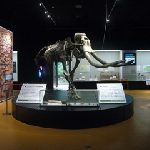
“The Elephant and the Man from Hamana Lake” -You will find the fossil of Palaeoloxodon naumanni, from 200,000 years ago, excavated at Hamana Lake and the replica fossil of Hamakita man, from 16,000 years ago, excavated at the Negata site in Hamakita. Lakes and marshes were a great life support system. This museum is next to the Jomon Shell Mound, from 4,000 ‒ 3,000 years ago.
The permanent exhibition introduces tens of thousands of years of history in the Hamamatsu area. After the formation of the Japanese archipelago, the plateaus and valleys of Mikatahara were formed by the sediments from the Tenryu River 400 to 500,000 years ago, when volcanic activity was active. Eventually, elephants and then people came.
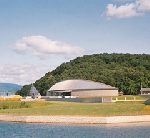
“Devises against Giant Animals” -The Iwajuku Site, dating back to the Paleolithic age, 30,000 years ago, was excavated from the Kanto region’s loam layer. In those days, both the Ice Age and volcanic activity took place.
This museum guides visitors about man’s encounters with great deer and mammoths, thru the relics of stone implements.
In 1949, Aizawa Tadahiro (1926 – 1989), a Japanese independent archaeologist who was the first to discover Japanese Paleolithic artifacts, discovered a stone spear of obsidian from the Kanto region with a layer of loam, red soil stratums. It used to be thought that humans could not live in the volcanic ash strata more than 10,000 years ago.
They were unknown strata in Japanese Archeology. With the challenge of Aizawa, the Paleolithic culture of 20,000 to 30,000 years ago became clear, and it became known as the Iwajuku Period.
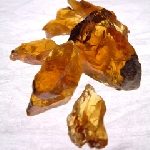
Amber was a fossilized resin of trees roar flourished tens of millions to hundreds of millions of years ago. It was buried in the sand. Kuji Amber is a tree species that originated from the Hoop pine of the southern sea, during the age of the dinosaurs, about 85 million years ago.
Kuji Amber is the oldest in the world, carried from the South Sea by the crustal movements of ancient times. Fossils of insects and feathers were discovered in the amber, and fossil DNA researchers are also paying attention to Kuji Amber. It is like the movie “Jurassic Park”.

Shirakawa City is a castle town that retains its history and many cultural properties. The Shirakawa Yuki clan influenced the south of Oshu (Northern Honshu, the region encompassing Mutsu and Dewa province), in the Medieval Ages. Shirakawa became a castle town of 100,000 koku, a unit of volume of rice, and the culture of common people flourished in the early modern times.
This museum introduces the history and culture of Shirakawa. It also introduces materials related to Kominejo Castle, and exhibits jade from Niigata Prefecture, obsidian from Tochigi Prefecture, and pottery from Tohoku and Kanto, excavated from archeological sites in the Jomon period (16,000 years ago – 3,000 years ago).
This museum tells the history of the place connecting with Oku no hosomichi, the Narrow Road to the Deep North, the major text of poems and essays, written as a travel journal, by Matsuo Basho.

Around the end of every January, the Ryu-hyo ice drift travels 1,000 km from the Amur river in Siberia to the Sea of Okhotsk. When the fresh water of the Amur river flows and a thin layer of saline is formed on the sea surface, the sea water develops into a large ice drift.
In 1913, a Moyolo Shell Mound, which is different from the Ainu culture mound, was discovered in Abashiri city Hokkaido. Later, the fact became clear that these ruins are from the Sea Okhotsk connected by the Amur river.
The ice drift and the shell mounds became overlapped.
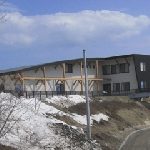
“This place used to be connected to Siberia” -This site is at the mouth of the Abashiri River, where the northern people migrated 1,200-1,300 years ago. Relics related to the Tungusic people, along the Amur River, were excavated. An example is the bronze bell, a symbol of patriarchy.
Moyoro Shell Mound was discovered in 1913 and later it was found that this site was the remains of the northern peoples who intermingled widely in the Kuril Islands, Sakhalin, and the Amur River basin, and migrated to Abashiri in the Heian period (794 – 1185).
This museum conveys the ancient wide-area exchanges.
